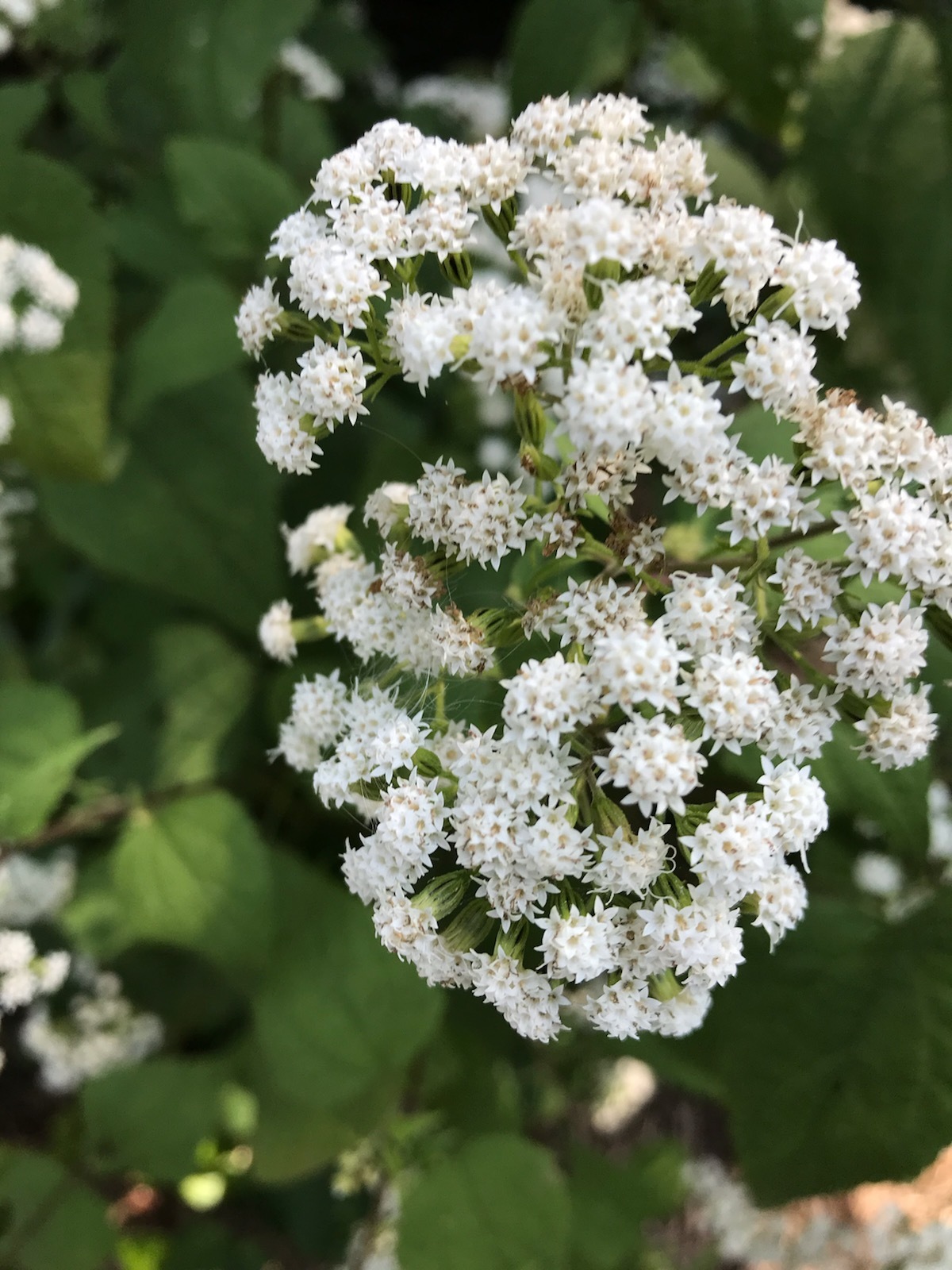Boneset, Eupatorium perfoliatum, a member of the aster family, is an herbaceous perennial plant native to the Eastern United States and Canada. It is also called aquaweed, feverwort or sweating plant.
You will find it now along woodland clearings and borders, fields, railways and roadsides. You may also find it in prairie gardens or home gardens. One source states that it is an excellent rain garden plant. It appeals to gardeners because it is a native plant that attracts pollinators like butterflies and bees.
The species name comes from the Latin "per" and "folia," meaning “through the leaves” and referring to the stem appearing to go through the joined leaves. One might think that the name comes from the ability to mend bones.
A long time ago a flu that caused severe body aches was called a breakbone fever. Boneset was traditionally a cough and fever remedy, so the name stuck. But scientists now say it does not make sense because it simply does not work. Current information calls it just a weed, and all parts of the plant are said to be quite toxic and bitter.
Whether just a weed or not, it is attractive and makes a nice addition to a natural landscape in the garden. Boneset grows two to five feet tall and is a hardy perennial that is easily grown and increased by division in the spring or early fall. It also tends to spread itself by scattering seeds. But if grown from seed, boneset will not produce flowers for two to three years.
Dense, terminal compound flower heads growing two to eight inches wide are comprised of clusters of ten to twenty tiny, tubular, fluffy, white florets. Each floret is about one-sixth of an inch across. The individual flower is made up of fifteen disc florets.
The florets have a pleasant scent. It is an excellent flower head to use in mass arrangements in place of the usual baby’s breath. It holds up for a long period of time in water but not as long in flower foam. Boneset can be dried for use in designs and wreaths.
Pairs of wrinkled, lance-shaped, finely toothed leaves are joined together around the stem. The medium-yellowish-green leaves unite around the hairy stems, making the stem seem to penetrate the leaves. The leaves are up to eight inches long and two inches across.
Boneset needs a consistent water source. It grows well in average medium-to-wet soils, although mine is not growing in wet soil. In other places it seems to prefer wet ditches. It is not aquatic. The plant prefers full sun or part shade and will tolerate both sandy and clay soils.
An excellent trait of this plant is that deer will not eat it. There are no serious insect or disease problems. The foliage may scorch if the soil dries out.




.webp)
.webp)
